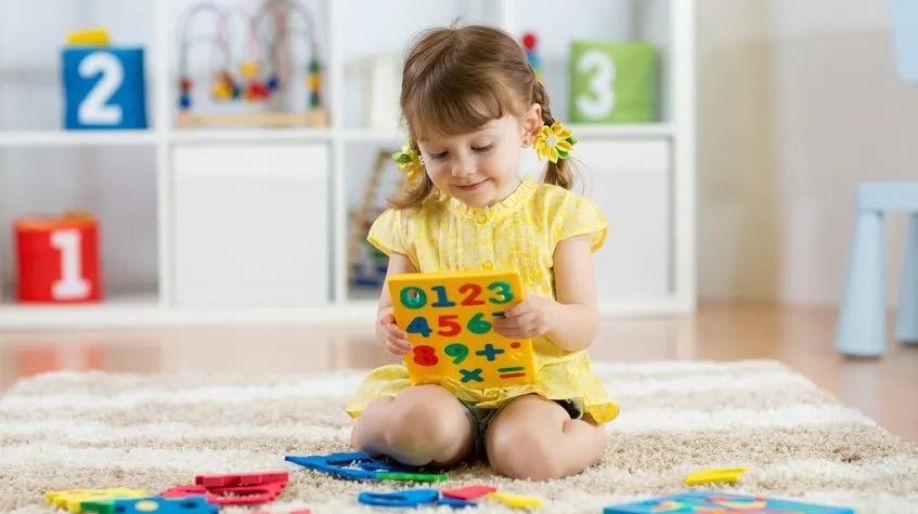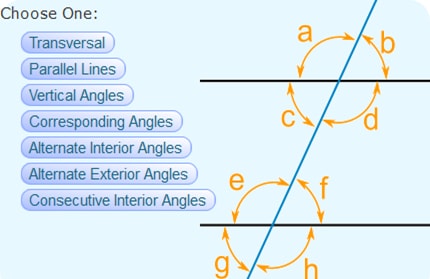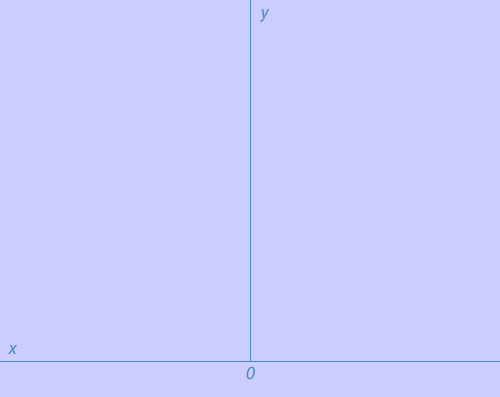- Numbers are four types: Natural Number, Whole Number, Integer, and Rational Numbers.
Numbers in general form
- Any two digit number xy made of digits x and y can be written as = 10 X x + 1X y
- Any three digit number xyz made of digits x, y, and z can be written as = 100 X x + 10Xy + 10Xz
EXAMPLE 1: Write the number 12 in generalized form.
SOLUTION: 12 = 10X1 + 1X2 = 10+2
EXAMPLE 2: Write the number 10X3 + 4 in usual form.
SOLUTION: 10X3 + 4 = 30 + 4 = 34
Games with numbers
- Reversing a two-digit number:
STEP 1: Suppose we choose a number xy, which is a short form for the 2-digit number 10x + y.
STEP 2: On reversing the digits, we get the number yx = 10y + x.
STEP 3: If we add the two numbers we get: (10x + y) + (10y + x) = 11x + 11y = 11 (x + y).
So, the sum is always a multiple of 11.
Observe here that if we divide the sum by 11, the quotient is x + y, which is exactly the sum of the digits of chosen number xy.
- Reversing a 3-digit number:
STEP 1: Let the 3-digit number be xyz = 100x + 10y + z.
STEP 2: After reversing the order of the digits, we get the number zyx= 100z + 10y + x.
STEP 3: On subtraction:
If x > z, then the difference between the numbers is (100x + 10y + z) – (100z + 10y + x) = 100x + 10y + z – 100z – 10y – x = 99x – 99z = 99(x – z).
• If z>a, then the difference between the numbers is (100z + 10y + x) – (100x + 10y + z) = 99z – 99x = 99(z – x).
• And, of course, if x = z, the difference is 0. In each case, the resulting number is divisible by 99. So the remainder is 0.
Observe that quotient is x – z or z – x.
- Forming three digit numbers with given 3-digits:
xyz = 100x + 10y + z
zxy = 100z + 10x + y
yzx = 100y + 10z + x
xyz + zxy + yzx = 111(x + y + z)
= 37 × 3(x + y + z), which is divisible by 37
EXAMPLE 1: Prove that the addition of a 2-digit no. and its reversed number is equal to the product of 11 and sum of the digits.
SOLUTION: 12= 10X1 + 2
21= 10X2 + 1
12+21= 11X3= 11X(1+2) [PROVED]
Hence, the addition of a 2-digit no. and its reversed number is equal to the product of 11 and sum of the digits.
EXAMPLE 2: Form 3-digit numbers with given 3 digit no. 123
SOLUTION: Combinations of the number 123 are 231,312 [Keeping in mind the no.s are in order]
123+231+312= 666= (1+2+3)X111= (1+2+3)X3X37
Hence, a 3 digit number formed by another 3-digit number can always be divided by 37.
Letter for digits
- Here letters take the place of digits in an arithmetic ‘addition’, and the we have to find out which letter represents which digit.
- Each letter must stand for just one digit. Each digit must be represented by just one letter.
- The first digit of a number can’t be zero. Hence, we write the no. ‘ninety-five’ as 95, and not as 095, or 0095.
EXAMPLE 1: Find X and Y in the addition. X + X + X
Y X
SOLUTION: This has two letters X and Y whose values are to be found.
Study the addition in the one's column: the sum of three X’s is a number whose ones digit is X.
Therefore, the sum of two X’s must be a number whose ones digit is 0.
This happens only for X = 0 and X = 5.
If X = 0, then the sum is 0 + 0 + 0 = 0, which makes Y = 0 too.
We do not want this (as it makes X = Y, and then the tens digit of YX too becomes 0), so we reject this possibility.
So, X = 5.
Therefore, the puzzle is solved as shown below.
5
+ 5
+ 5
15 That is, X = 5 and Y = 1.
EXAMPLE 2: Find the digits X and Y.
Y X
× Y 3
5 7 X
SOLUTION: This also has two letters X and Y whose values are to be found.
Since the ones digit of 3 × X is X, it must be that X = 0 or X = 5.
Now, look at Y.
If Y = 1, then YX × Y3 would at most be equal to 19 × 19; that is, it would at most be equal to 361.
But the product here is 57X, which is more than 500.
So we cannot have Y = 1.
If Y = 3, then YX × Y3 would be more than 30 × 30; that is, more than 900.
But 57X is less than 600.
So, Y cannot be equal to 3.
Hence, Y = 2 .
Therefore, the multiplication is either 20 × 23 or 25 × 23.
But, 20 × 23 = 460. Thus, the second one is the correct multiplication.
The second one works out correctly, 25 × 23 = 575. The answer is X = 5, Y = 2.
2 5
×2 3
575
Tests of Divisibility
- Divisibility by 10: If the ones digit of a number is 0, then the number is a multiple of 10; and if the ones digit is not 0, then the number is not a multiple of 10. So, we get a test of divisibility by 10.
- Divisibility by 5: If the ones digit of a number is 0 or 5, then it is divisible by 5.
- Divisibility by 2: If the one’s digit of a number is 0, 2, 4, 6 or 8 then the number is divisible by 2.
- Divisibility by 9 and 3:
(a) A number is divisible by 9 if the sum of its digits is divisible by 9.
(b) A number X is divisible by 3 if the sum of its digits is divisible by 3. Otherwise, it is not divisible by 3.
EXAMPLE 1: Check the divisibility of 15284 by 3.
SOLUTION: The sum of the digits of 15284 is 1 + 5 + 2 + 8 + 4 = 20. This number is not divisible by 3. We conclude that 15284 too is not divisible by 3.
EXAMPLE 2: If the three-digit number 12a is divisible by 9, what is the value of a?
SOLUTION: Since 12a is divisible by 9, sum of its digits, i.e., 1 + 2 + a should be divisible by 9, i.e., 3 + a should be divisible by 9.
This is possible when 3 + a = 9 or 18, .... But, since a is a digit, therefore, 3 + a = 9, i.e., x = 6.
Practice these questions
Q1) If 12a3 is a multiple of 3, where a is a digit, what might be the values of a?
Q2) If 34a is a multiple of 3, where a is a digit, what is the value of a?
Q3) If 56a7 is a multiple of 9, where a is a digit, what is the value of a?
Q4) Find the value of the letters 1 2 X
+ 6 A Y
X 0 9
Q5) Find the value of the letters 2 A B
+A B 1
B 1 8
Q6) If 417 is added with its other combinations then check if the sum is divided by 37 or not.
Q7) Write the number 100 × x + 10 × y + z in its usual form.
Q8) Write the number 302 in its generalised form.
Recap
- Numbers are four types: Natural Number, Whole Number, Integer, and Rational Numbers.
- Any three digit number xyz made of digits x, y, and z can be written as = 100 X x + 10Xy + 10Xz
- xyz = 100x + 10y + z
zxy = 100z + 10x + y
yzx = 100y + 10z + x
xyz + zxy + yzx = 111(x + y + z) = 37 × 3(x + y + z), which is divisible by 37 - If the ones digit of a number is 0, then the number is a multiple of 10
- If the digit at one’s place of a number is 0 or 5, then the number is divisible by 5.
- If the ones digit of a number is 0, 2, 4, 6 or 8 then the number is divisible by 2.


























